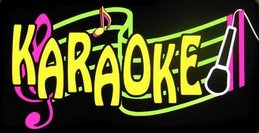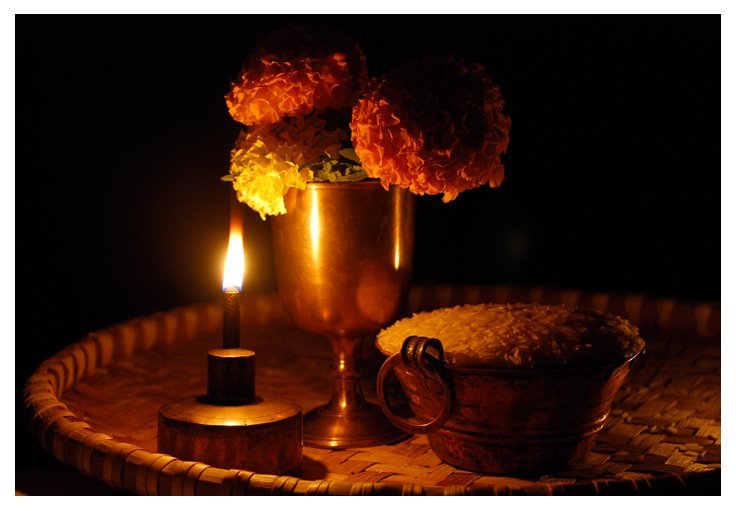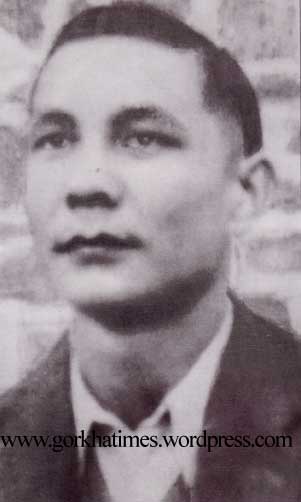JHANKRI CULT (Shaminism In Gorkha Society)
Posted by Ramesh Khati on June 30, 2009
JHANKRI CULT
The cult of spirit possession and their customary community priests are still found in the Gorkha society. These community priests, who can posses supernatural powers, are supposed to perform all the customary rites from birth to death. They act as a priest as well as perform the role of medicine person to heal the patients and ward off intruder evil spirits from the body of a possessed person. Whenever necessary these community priests are also able to introduce, voluntarily, the spirits in their body. These community priests can be termed as Shaman as defined in various books and dictionaries. The folklore of the Gorkhas is full of legendary characters like Ban-Jhankri (jungle’s priest), Buriboju (old grandmother), Jungalee(God of jungle/nature), Shikari(hunter or God of jungle/Shiva) and Boksi/Boksa (witches) etc. that are considered teachers and inspirations of these community priests. Buriboju, Jungalee and Shikari are considered friendly souls who do not harm the human beings unless they are disturbed or not given due respects/offerings at the time of performing various rites. Boksi and Boksa are wicked souls who cast bad spells on people especially on children. They assume the shape of black cats and attack at night. Ban-Jhankri is believed to be the first Shaman who was taught the knowledge of mastering the spirits by god himself with a promise to teach and pass the technique to the human beings for their welfare. Since then, Ban-Jhankri has been teaching technique to selected persons. However, it does not mean that Shaman found in the Gorkha society fall under this category or all are disciples of the Ban-Jhankri. Actually there are varieties of Shamans with different powers and uses. Fedengba, Samba, Yema, Yeba, Poinbu, Ngiami, Bonbo, Pajiu, Khepre, Bijuwa, Garau, Mangpa etc. are some of the Shamans who are found in the Gorkha Society.
According to a myth, a Ban-Jhankri lives in a deep forest. He is short like a dwarf with long profuse hair jingling like tiny bells, covering almost his entire body. He likes clean and neat places and also chokho (pure/holy) persons to be his disciples. He selects young boys of any ethnic group who do not have any scratches or cut marks over their body and takes them to his cave house deep in the jungle. There he teaches them all the techniques; he offers them earthworms and the eggs of the ants to eat. After imparting his knowledge, he leaves them unharmed at the same place from where he had earlier lifted them. At the time of parting he presents Dhyangro ( A traditional drum used by Shamans), hairs , etc. to his disciples. While at confinement, Ban-Jhankri keeps the boys hidden from his wife, as it is believed that she devours human beings, if found. Such boys consequently become jhankris who can solemnize ceremonies to ward off evil spirits. However, in some cases the word jhankri is also used as common noun indicating a customary Shaman having supernatural powers.
The Fedenba, Samba, Yema, Yeba are the priests of the Limbus. The first one performs religious rites mostly linked to the various life- cycle ceremonies like birth, marriage and also can invoke tutelary or lineage diety. In such cases, the Fedengbas do not go to trance. Samba is the master of the Mundhum, the oral religious verse of the Limbus. He is the person who can voluntarily posses the soul of the dead, in the last rites, and with the help of Mundhum, makes the safe way to heaven for the dead. Yeba and Yema are the two male and female Shamans who can control the evil spirits. While Fedengba and Samba use a bronze thal (plate) as a drum at the time of performing rites, it is dhyangro(traditional drum used by Shamans) that is used by Yeba and Yema. However, in the most cases all the Shamans can be seen using thal as a drum. Yeba and Yema usually wear white frocks, headgear with feathers stuck to it, rudraksh ( a holy bead), cowrie (conch/shell), ghanti (bells) etc. While other Shamans hardly wear any specific dress unless it is necessary, except a turban like pheta or a traditional dhaka topi (traditional cap), which is necessary for all to wear while performing rites and ceremonies.
Rais use the services of Bijuwa, who wears similar dresses as described above to ward off evil spirit and to take the soul of a dead to heaven or safer place by performing chinta (séance/trance) at the time of last rites. Dewa Nakcho is their priest who invokes lineage deity. Mangpa and Nopa are other customary priests found in Rai community.
The religion that is followed by Gurungs is a blend of animism, Hinduism and Buddhism. Lately they started to follow Buddhism strictly. As such, animism and their traditional priests have little place in their society. Even little animism that is followed by them is also greatly influenced by Bon religion of Tibet. Their priest is known as Pajiu and Khepre or Ghyapring. Nowadays they use the services of Buddhist Lama to perform their rituals and life-cycle ceremonies. Like Gurungs, Tamangs too are Buddhist by religion hence their rituals and other ceremonies are also performed by a Lama. However, it is necessary to include a Bonbo in a ceremonial team along with other dignitaries. Sherpa too follow monastic religion. As such they too use the services of a Shaman, very rarely, in a ritual. Their female Shaman Doloma is not capable of voluntary possession as other Shamans.
Lepcha’s male Shaman is Boomthing and female one is Mun. They perform all the rituals from birth to death: Similarly Sunuwar too have two types of Shamans, one male called Poinbu and other female called Ngiami.
Besides these, there are other practicing Shamans found in all ethnic community. The Most common one is Dhami. Another type is Mata, which is relatively new concept but is spreading fast in the society. There are some basic differences between a Dhami and a Mata. The former is old, and customarily recognized male Shaman while the latter, either male or female, is very new to the society. Dhami performs anywhere anytime but Mata performs only in a specific place and at a specific time. However, the similarity is that the both Shamans can voluntarily possess their tutelary god or guru (teacher) and can ascertain the disease or misfortune befallen on a person. They are also capable to predict the future. Remedies are also available with them.
Even today, the above described Shamans have a very special place in the Gorkha society. Although with the advent of the modern technology and medical science, the concept of these Shamans is gradually vanishing. And some section of so called modern and developed society is branding it as superstitious, without doing any in-depth research. But it is an invaluable segment of the Gorkha traditions, full of unsolved mysteries.



















Leave a comment